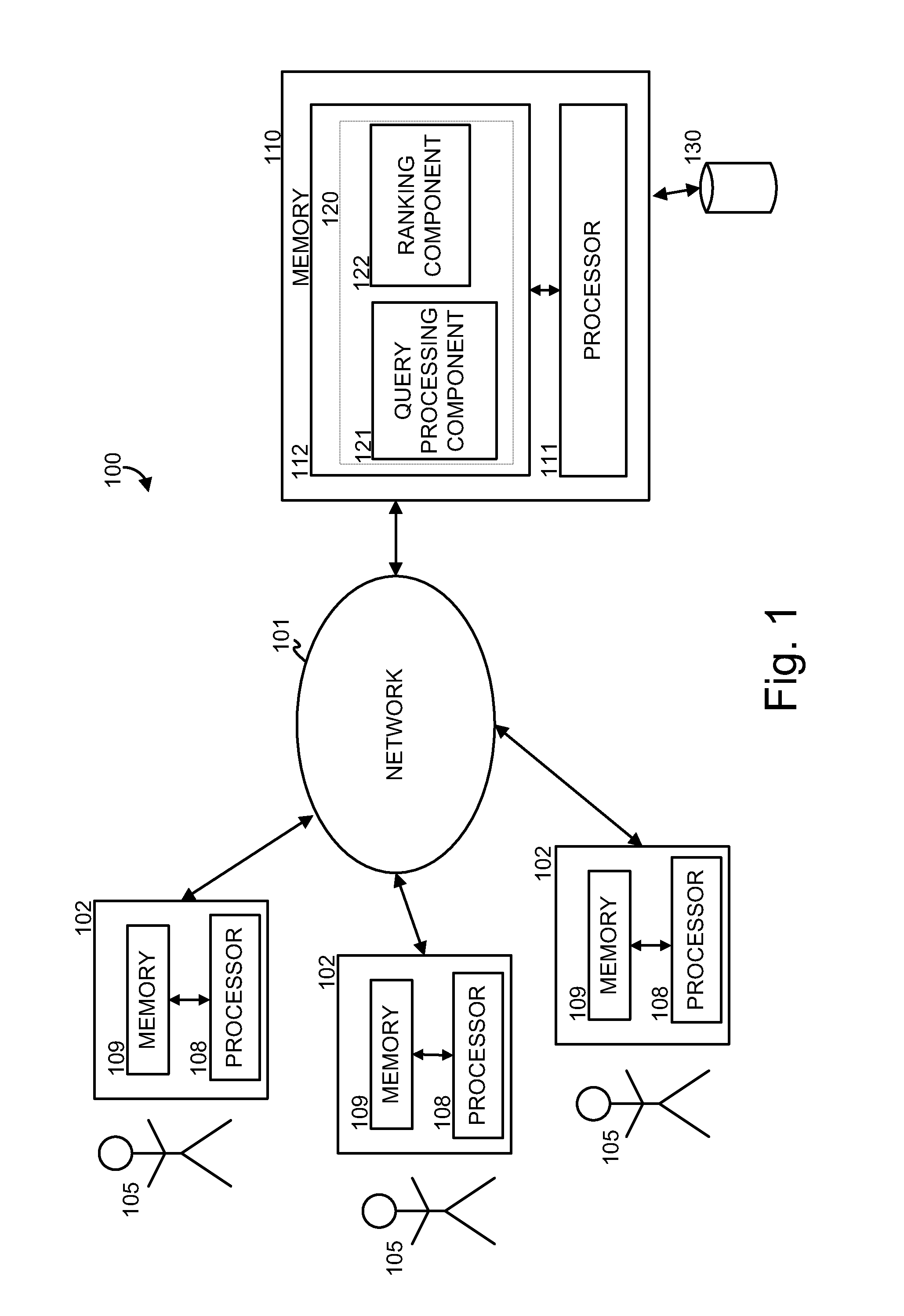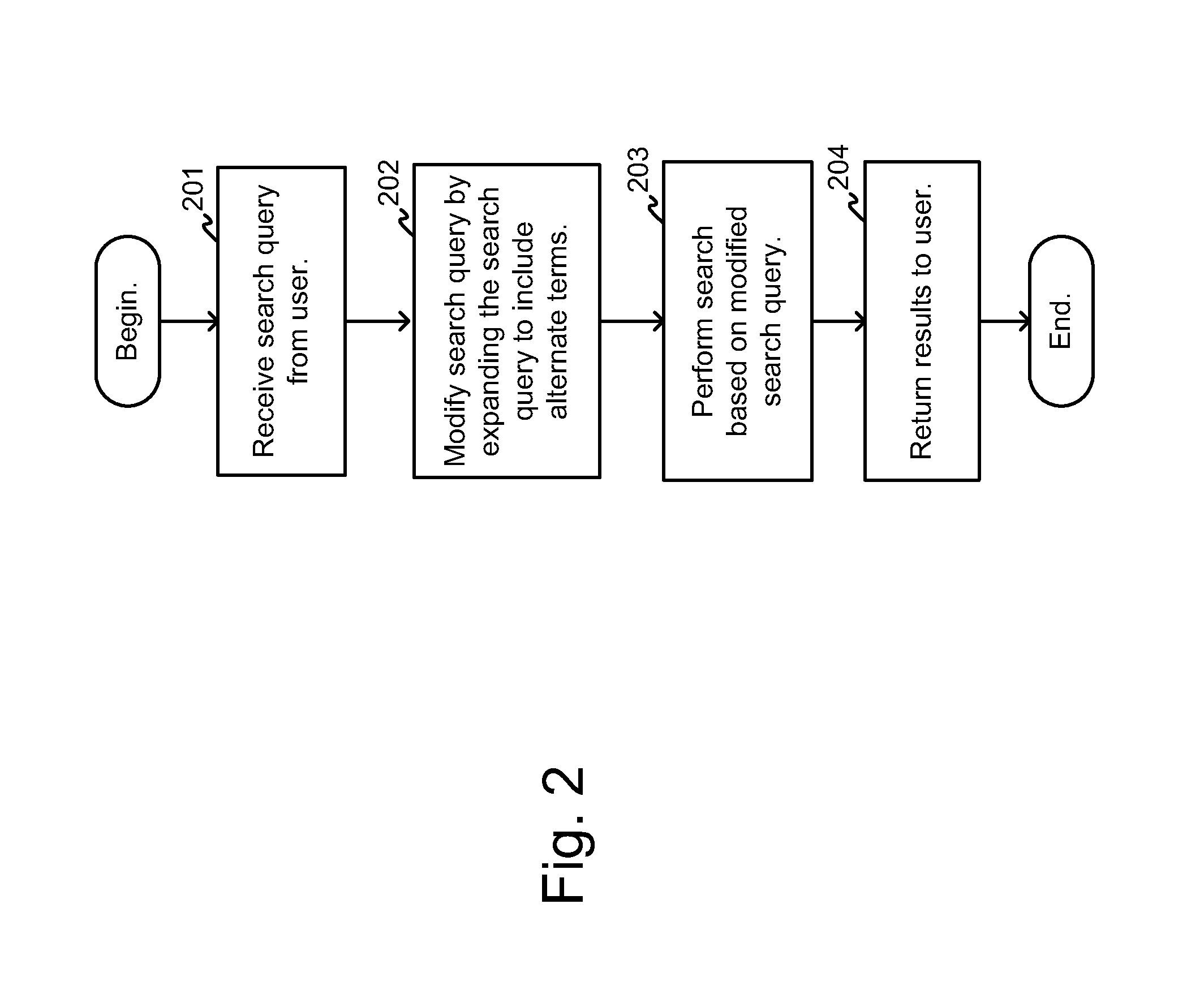Search queries improved based on query semantic information
a search query and semantic information technology, applied in the field of information location, can solve the problems of increasing the amount of information on the web, challenging to locate a desired portion of information, and increasing the difficulty of searching for information
- Summary
- Abstract
- Description
- Claims
- Application Information
AI Technical Summary
Problems solved by technology
Method used
Image
Examples
Embodiment Construction
[0024]The following detailed description of the invention refers to the accompanying drawings. The detailed description does not limit the invention. Instead, the scope of the invention is defined by the appended claims and equivalents.
[0025]As described herein, a search query is expanded to include additional terms or phrases that are similar or related to the terms in the initial search query that was received from the user. A list of possible “similar” terms can be located by, for example, stemming or synonym based techniques. A query context is built based on the initial search query. The query context may be defined by a set of documents that are relevant to the initial search query. A document may be deemed relevant to a search query if, for example, it is retrieved in response to the query. The additional terms or phrases may then be compared to the query context. Additional terms that are supported in the query context can be used to expand the initial search query while add...
PUM
 Login to View More
Login to View More Abstract
Description
Claims
Application Information
 Login to View More
Login to View More - R&D
- Intellectual Property
- Life Sciences
- Materials
- Tech Scout
- Unparalleled Data Quality
- Higher Quality Content
- 60% Fewer Hallucinations
Browse by: Latest US Patents, China's latest patents, Technical Efficacy Thesaurus, Application Domain, Technology Topic, Popular Technical Reports.
© 2025 PatSnap. All rights reserved.Legal|Privacy policy|Modern Slavery Act Transparency Statement|Sitemap|About US| Contact US: help@patsnap.com



